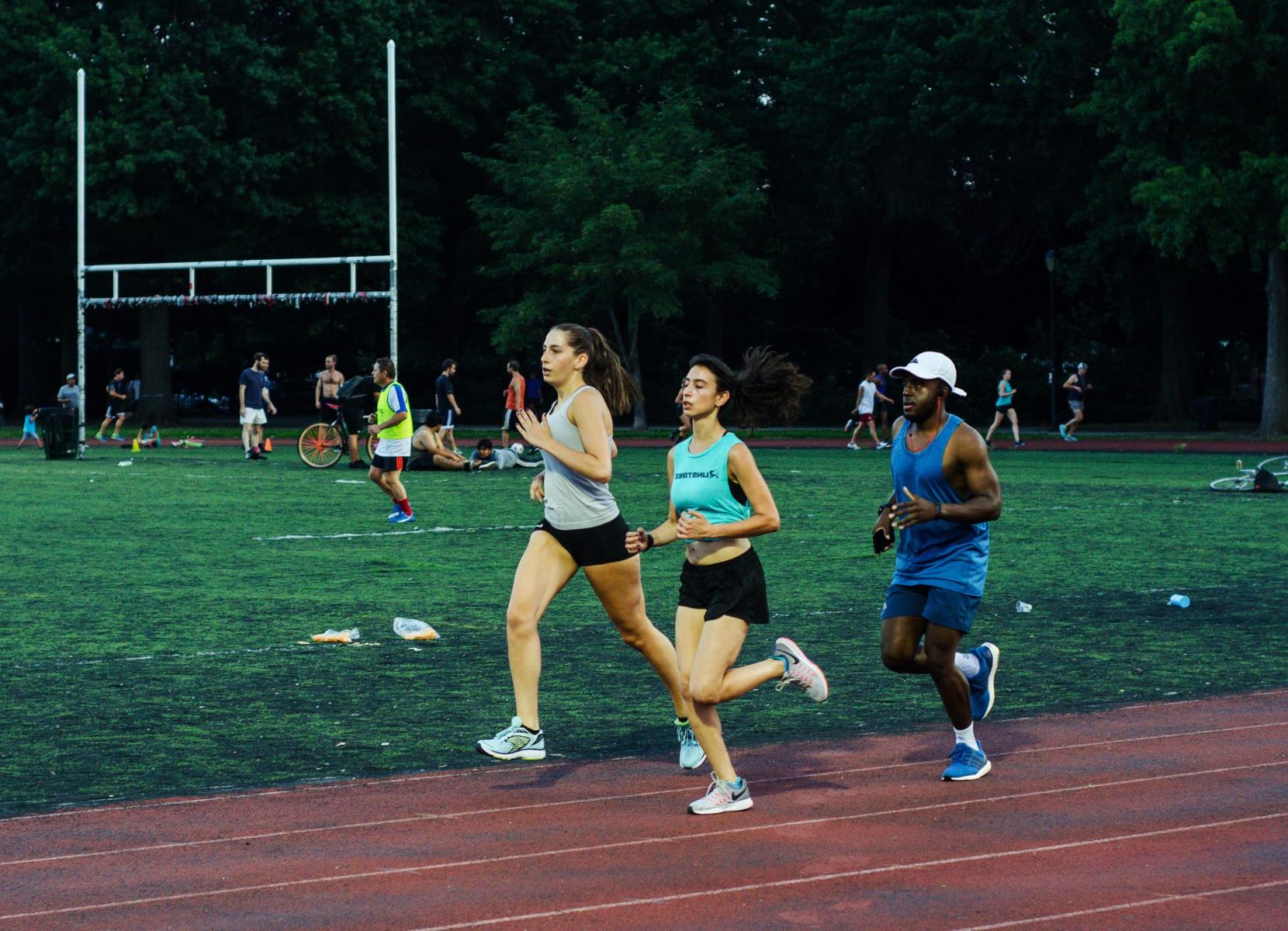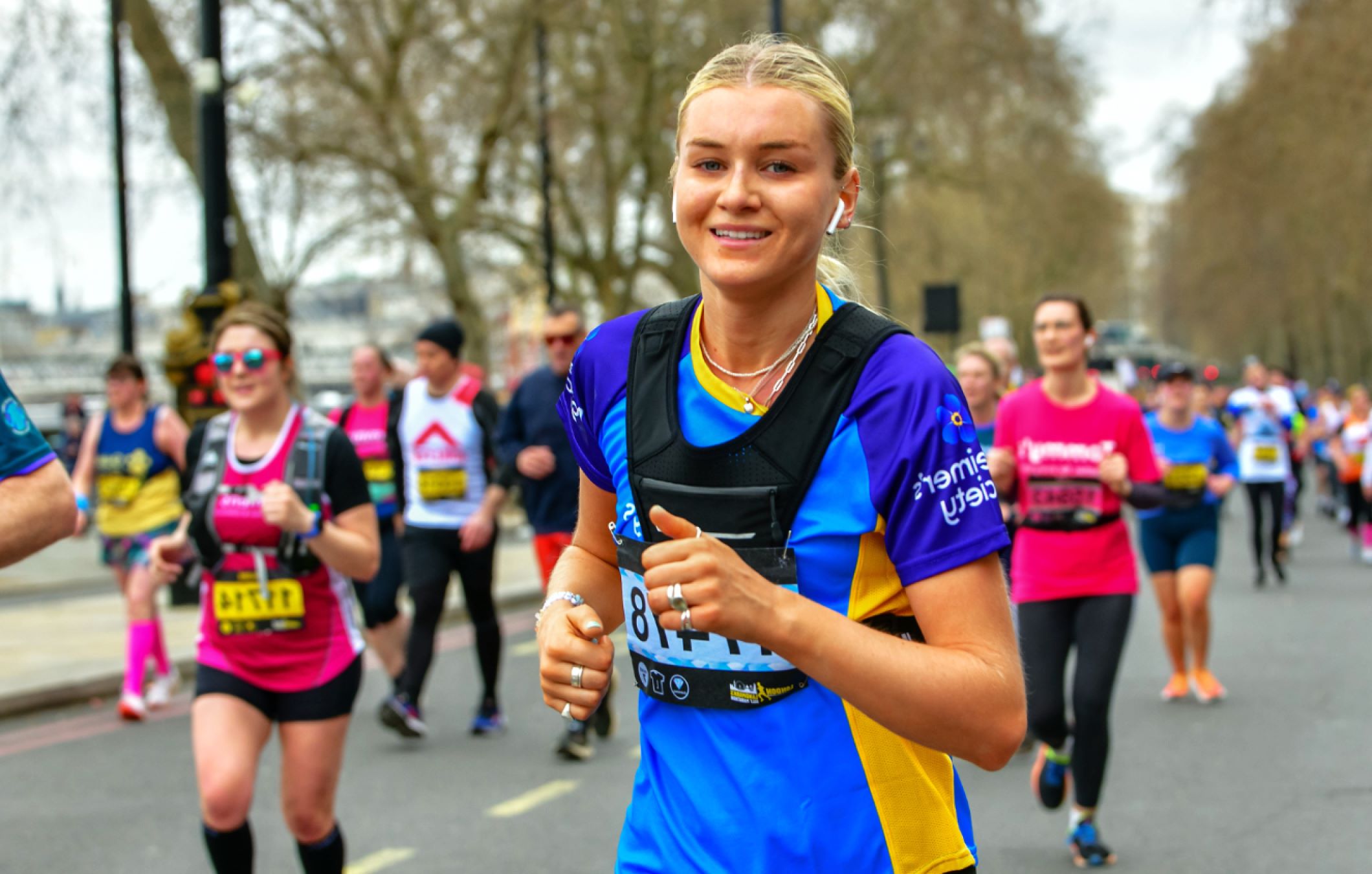Home>Training & Techniques>Expert Tips For Running A Sub 20 5k


Training & Techniques
Expert Tips For Running A Sub 20 5k
Published: March 1, 2024
Discover expert training and techniques for achieving a sub 20 5k with valuable tips and strategies to improve your running performance. Unlock your potential and reach your goals faster.
(Many of the links in this article redirect to a specific reviewed product. Your purchase of these products through affiliate links helps to generate commission for Therunningadvisor.com, at no extra cost. Learn more)
Table of Contents
Importance of Proper Training
Proper training is the cornerstone of achieving a sub 20 5k. It's not just about running countless miles; it's about training smart and efficiently. Here are some key aspects of proper training that can help you achieve your goal:
-
Structured Training Plan: Following a well-structured training plan is crucial. It should include a mix of speed work, tempo runs, long runs, and recovery days. A gradual increase in mileage and intensity will help build endurance and speed while minimizing the risk of injury.
-
Consistency: Consistent training is essential for improvement. It's not just about the intensity of individual workouts but also about showing up day after day. Consistency builds fitness and mental toughness, both of which are vital for a sub 20 5k.
-
Quality Workouts: Incorporating high-quality workouts such as intervals, fartleks, and tempo runs into your training regimen can significantly improve your speed and endurance. These workouts challenge your body to adapt to higher levels of exertion, leading to improved performance.
-
Recovery: Adequate recovery is as important as the training itself. It's during the recovery phase that your body adapts to the stress of training and becomes stronger. Proper rest, nutrition, and sleep are crucial for effective recovery.
-
Listen to Your Body: Pay attention to your body's signals. If you're feeling excessively fatigued or experiencing persistent pain, it's important to adjust your training or seek professional guidance to prevent overtraining and injuries.
-
Adaptability: Training plans should be adaptable to accommodate life's inevitable curveballs. Whether it's adjusting your schedule due to unexpected commitments or modifying workouts based on how your body feels, flexibility is key to maintaining consistency and progress.
By prioritizing proper training, you lay a solid foundation for achieving a sub 20 5k. It's not just about pushing your limits but also about understanding the importance of balance, recovery, and adaptability in the pursuit of your goal.
Nutrition and Hydration
Proper nutrition and hydration play a pivotal role in the journey towards achieving a sub 20 5k. The food you consume and the fluids you intake directly impact your energy levels, endurance, and overall performance. Here's a comprehensive look at how you can optimize your nutrition and hydration to support your running goals:
-
Balanced Diet: Fueling your body with a balanced diet rich in carbohydrates, lean proteins, healthy fats, vitamins, and minerals is essential for sustaining energy levels and supporting muscle recovery. Carbohydrates serve as the primary fuel source for running, while proteins aid in muscle repair and growth.
-
Pre-Run Fueling: Consuming a light meal or snack containing carbohydrates and a moderate amount of protein before your run can provide the necessary energy to power through the workout. Opt for easily digestible options such as a banana with nut butter, a small bowl of oatmeal, or a yogurt parfait.
-
Hydration: Staying adequately hydrated is crucial for optimal performance. Dehydration can lead to decreased endurance, muscle cramps, and fatigue. It's important to drink water consistently throughout the day and especially before, during, and after your runs. Electrolyte-rich drinks can also help replenish lost minerals during intense workouts.
-
Post-Run Recovery: After a run, refueling your body with a combination of carbohydrates and protein is vital for muscle recovery and glycogen replenishment. Including a post-run snack or meal within 30-60 minutes of completing your run can enhance recovery and prepare your body for the next training session.
-
Supplementation: While a well-rounded diet should be the primary source of nutrients, some runners may benefit from supplements such as iron, vitamin D, or omega-3 fatty acids. Consulting with a healthcare professional or a registered dietitian can help determine if supplementation is necessary based on individual needs.
-
Timing and Portion Control: Pay attention to the timing and portion sizes of your meals and snacks, especially before a run. Eating too close to a workout can lead to discomfort, while consuming large meals may cause sluggishness. Experiment with different timing and portion strategies to find what works best for your body.
By prioritizing proper nutrition and hydration, you provide your body with the essential building blocks and energy required to tackle the demands of training for a sub 20 5k. It's not just about the miles you log but also about the quality of fuel you provide to support your running endeavors.
Rest and Recovery
Rest and recovery are often undervalued yet critical components of a successful training regimen, especially when aiming for a sub 20 5k. While the focus is typically on the physical exertion of running, it's during periods of rest and recovery that the body adapts, repairs, and grows stronger. Here's an in-depth exploration of the rest and recovery strategies that can significantly impact your performance and overall well-being:
-
Adequate Sleep: Quality sleep is fundamental for recovery and performance. During sleep, the body undergoes essential processes such as muscle repair, hormone regulation, and mental rejuvenation. Aim for 7-9 hours of uninterrupted sleep each night to support your training efforts.
-
Active Recovery: Engaging in light, low-impact activities such as walking, cycling, or swimming on rest days can promote blood flow, reduce muscle stiffness, and aid in recovery. Active recovery helps prevent the buildup of lactic acid and can alleviate post-run soreness.
-
Rest Days: Scheduled rest days are not a sign of weakness but rather a strategic approach to allow the body to recharge. Embracing rest days as part of your training plan is crucial for injury prevention and long-term sustainability. It's a time to relax, recharge, and mentally reset.
-
Foam Rolling and Stretching: Incorporating foam rolling and regular stretching sessions into your routine can enhance flexibility, alleviate muscle tightness, and improve overall mobility. These practices can aid in the prevention of injuries and contribute to faster recovery between workouts.
-
Mental Relaxation: Rest and recovery extend beyond physical rest; mental relaxation is equally important. Engage in activities that promote mental well-being, such as meditation, mindfulness, or hobbies that bring joy and relaxation. A calm and focused mind can positively influence your running performance.
-
Nutrition for Recovery: Optimal post-run nutrition plays a vital role in the recovery process. Consuming a balanced meal or snack containing carbohydrates and protein within the post-run window can aid in muscle repair and glycogen replenishment. Additionally, incorporating anti-inflammatory foods can help reduce exercise-induced inflammation.
-
Listen to Your Body: Pay attention to your body's signals and adjust your training as needed. If you're feeling excessively fatigued or experiencing persistent discomfort, it's crucial to prioritize rest and recovery. Pushing through when your body is signaling the need for rest can lead to burnout and potential injury.
By prioritizing rest and recovery as integral parts of your training journey, you not only enhance your physical performance but also cultivate a sustainable and balanced approach to running. It's the harmonious integration of training, rest, and recovery that paves the way for long-term progress and success in achieving a sub 20 5k.
Mental Preparation
Mental preparation is a fundamental aspect of achieving a sub 20 5k. While physical training builds the body's strength and endurance, mental preparation cultivates the resilience, focus, and determination needed to conquer the challenges of a demanding race. Here's an in-depth exploration of the strategies and techniques that can fortify your mental game and propel you towards your running goals:
Visualisation and Positive Affirmations
Visualisation is a powerful mental tool that involves creating vivid mental images of successfully completing a race. By visualising the racecourse, envisioning yourself running strong, and crossing the finish line with determination, you can instill confidence and reduce pre-race anxiety. Additionally, incorporating positive affirmations, such as "I am strong," "I am capable," and "I can achieve my goals," can bolster self-belief and foster a positive mindset.
Goal Setting and Mantra Development
Setting clear and achievable goals for the race, whether it's maintaining a consistent pace, conquering challenging segments, or executing a strong finishing kick, provides a sense of purpose and direction. Developing a personal mantra, such as "I am resilient," "I am focused," or "I am relentless," can serve as a source of motivation and empowerment during challenging moments in the race.
Stress Management and Mindfulness
Practicing stress management techniques, such as deep breathing, progressive muscle relaxation, or mindfulness meditation, can help alleviate pre-race jitters and promote a calm and focused state of mind. Mindfulness techniques encourage staying present in the moment, allowing runners to channel their energy and attention towards the race itself rather than being consumed by apprehension or self-doubt.
Mental Rehearsal and Race Strategy
Engaging in mental rehearsal involves mentally simulating various race scenarios, including overcoming obstacles, managing fatigue, and executing strategic race tactics. By envisioning potential challenges and formulating effective responses, runners can enter the race with a prepared and adaptable mindset. Developing a race strategy that aligns with your strengths and goals can instill a sense of control and confidence, enhancing mental readiness for the race.
Resilience Building and Positive Self-Talk
Building mental resilience involves embracing setbacks and challenges as opportunities for growth rather than insurmountable obstacles. Cultivating a habit of positive self-talk, especially during challenging moments in training and racing, can bolster confidence and perseverance. Encouraging internal dialogue, such as "I am capable of pushing through discomfort" and "I am resilient in the face of adversity," can fortify mental toughness and resolve.
By integrating these mental preparation strategies into your training and race-day routines, you can cultivate a resilient and focused mindset that empowers you to tackle the demands of a sub 20 5k. It's not just about physical prowess but also about nurturing mental fortitude and belief in your ability to achieve your running aspirations.
Read more: Improve Your 5K Speed With This Workout
Race Strategy
Race strategy encompasses the meticulous planning and execution of tactics aimed at optimizing performance and achieving specific goals during a race. When targeting a sub 20 5k, a well-crafted race strategy becomes paramount in navigating the nuances of the distance and maximizing speed and endurance. Here's an in-depth exploration of the key elements that constitute an effective race strategy for a sub 20 5k:
Pacing and Mileage Segmentation
Strategic pacing is fundamental in a sub 20 5k race. Breaking down the race into manageable segments, such as mile splits or kilometer markers, allows for precise pacing control. For a sub 20 5k, maintaining an average pace of approximately 6 minutes and 26 seconds per mile is essential. By starting conservatively and gradually building up to race pace, runners can avoid premature fatigue and effectively manage their energy output.
Start Line Positioning and Early Momentum
Strategically positioning oneself at the start line is crucial for avoiding congestion and ensuring a smooth start. For runners aiming for a sub 20 5k, positioning closer to the front can provide a clear path to establish an early rhythm. Utilizing the initial downhill or flat sections to build momentum without overexertion sets a positive tone for the remainder of the race.
Mental Preparedness and Focus
Maintaining mental composure and focus throughout the race is a key component of an effective race strategy. Anticipating and preparing for potential mental hurdles, such as mid-race fatigue or self-doubt, allows runners to employ mental resilience techniques. Staying present in the moment, focusing on form and breathing, and embracing positive self-talk can help sustain mental fortitude and determination.
Strategic Surges and Finish Line Kick
Strategic surges, particularly in the latter stages of the race, can be employed to maintain momentum and gain a competitive edge. Identifying opportune moments, such as slight downhill sections or nearing the final kilometer, to increase pace can propel runners towards their sub 20 goal. Additionally, reserving energy for a strong finish line kick is pivotal in ensuring a successful sub 20 5k performance.
Adaptability and Response to Race Dynamics
Remaining adaptable and responsive to race dynamics is essential for a successful race strategy. Anticipating potential challenges, such as changes in weather, unexpected surges from competitors, or internal fatigue, allows runners to adjust their strategy in real-time. Flexibility in pacing, mental approach, and tactical decision-making can mitigate unforeseen obstacles and maintain momentum towards the sub 20 goal.
By meticulously crafting and executing a comprehensive race strategy that encompasses pacing, mental preparedness, strategic surges, and adaptability, runners can optimize their performance and increase their likelihood of achieving a sub 20 5k. It's the seamless integration of physical prowess and strategic acumen that propels runners towards their desired race outcomes.
Avoiding Common Mistakes
When striving for a sub 20 5k, avoiding common mistakes is pivotal in ensuring a smooth and effective training and racing experience. By preemptively addressing potential pitfalls, runners can optimize their preparation and performance. Here's an in-depth exploration of the common mistakes to avoid when pursuing a sub 20 5k:
Overtraining and Under-Recovery
Overzealous training regimens can lead to overtraining, resulting in fatigue, decreased performance, and heightened injury risk. Balancing intensity, volume, and recovery is crucial. Adequate rest and recovery periods are equally essential for allowing the body to adapt and grow stronger.
Ignoring Proper Warm-Up and Cool Down
Neglecting a thorough warm-up and cool down can hamper performance and increase the risk of injury. Engaging in dynamic warm-up exercises and incorporating a cooldown routine post-run can enhance muscle readiness and aid in the recovery process.
Inadequate Focus on Speed Work
Underestimating the significance of speed work in training can impede progress towards a sub 20 5k. Incorporating intervals, tempo runs, and fartleks is essential for improving speed, endurance, and overall race performance.
Poor Nutrition and Hydration Practices
Neglecting proper nutrition and hydration can compromise energy levels, recovery, and overall well-being. Maintaining a balanced diet, staying adequately hydrated, and fueling effectively before, during, and after runs are critical for optimal performance.
Inconsistent Training and Lack of Planning
Inconsistency in training and a lack of structured planning can hinder progress towards a sub 20 5k. Following a well-organized training plan and maintaining consistency in workouts are key for gradual improvement and goal attainment.
Read more: 5K Run: Boost Your Endurance And Fitness
Neglecting Mental Preparation
Underestimating the role of mental preparation can impact race-day performance. Cultivating mental resilience, employing visualization techniques, and developing a positive mindset are essential for overcoming mental hurdles during the race.
Inadequate Recovery and Injury Management
Failing to prioritize adequate recovery and neglecting early signs of potential injuries can derail training progress. Embracing rest days, engaging in active recovery, and seeking timely professional guidance for injury management are crucial for long-term sustainability.
Lack of Adaptability and Flexibility
Rigid adherence to a training plan without room for adaptability can lead to burnout and potential setbacks. Embracing adaptability, adjusting training based on individual responses, and being flexible in approach are vital for sustained progress.
By proactively addressing and avoiding these common mistakes, runners can fortify their training and racing endeavors, paving the way for a more efficient and rewarding pursuit of a sub 20 5k. It's the amalgamation of strategic training, mindful preparation, and error mitigation that propels runners towards their desired performance outcomes.
Cross-Training and Strength Training
In the pursuit of achieving a sub 20 5k, the incorporation of cross-training and strength training into the overall training regimen can significantly enhance an athlete's performance and resilience. While running forms the core of the training program, integrating complementary activities and targeted strength exercises can yield multifaceted benefits that extend beyond pure running fitness.
Cross-Training: Diversifying Physical Conditioning
Cross-training involves engaging in alternative forms of exercise that complement running while offering varied physical challenges. Activities such as cycling, swimming, elliptical training, and rowing not only provide cardiovascular conditioning but also reduce the repetitive impact on the body associated with running. By diversifying the movement patterns and muscle engagement, cross-training aids in preventing overuse injuries and promoting overall muscular balance.
Furthermore, cross-training serves as a valuable tool for maintaining aerobic fitness during periods of reduced running volume or when recovering from intense workouts. It allows runners to sustain cardiovascular endurance while alleviating the strain on specific running-related muscles, thereby supporting recovery and long-term training sustainability.
Strength Training: Building Resilient Muscles
Incorporating targeted strength training exercises into the training routine is instrumental in fortifying the muscles and connective tissues essential for running performance. Focusing on exercises that enhance lower body strength, core stability, and overall muscular endurance can contribute to improved running economy, reduced injury risk, and enhanced power generation.
Key strength training exercises for runners include squats, lunges, deadlifts, calf raises, planks, and hip strengthening movements. These exercises not only bolster the major muscle groups utilized during running but also promote joint stability and muscular coordination, leading to more efficient and resilient running mechanics.
Integration and Periodization
The integration of cross-training and strength training should be approached with a strategic and periodized mindset. By aligning cross-training activities with specific training objectives, such as active recovery, aerobic maintenance, or supplementary endurance development, runners can optimize the synergistic benefits of cross-training while minimizing interference with primary running adaptations.
Similarly, the incorporation of strength training should be periodized to align with different phases of the training cycle, such as base building, speed development, and tapering. This approach allows for targeted emphasis on strength and power during appropriate training periods, ensuring that the strength gains seamlessly integrate with the overarching running performance goals.
Holistic Performance Enhancement
Ultimately, the inclusion of cross-training and strength training in a runner's regimen contributes to holistic performance enhancement. It fosters a well-rounded athleticism, mitigates the risk of overuse injuries, and cultivates a robust musculoskeletal foundation capable of withstanding the demands of intense training and racing. By embracing a comprehensive approach that extends beyond pure running mileage, runners can elevate their physical resilience, performance potential, and long-term running enjoyment.
In summary, the strategic integration of cross-training and strength training serves as a cornerstone for optimizing running performance and fostering a resilient, well-rounded athlete prepared to tackle the challenges of a sub 20 5k.
Injury Prevention and Management
In the pursuit of achieving a sub 20 5k, injury prevention and effective management are paramount for sustaining training consistency and optimizing performance. By proactively addressing potential risk factors and implementing targeted strategies, runners can mitigate the likelihood of injuries and navigate the challenges associated with intense training regimens. Here's an in-depth exploration of the multifaceted approach to injury prevention and management:
Preemptive Measures and Risk Identification
Preemptive measures form the foundation of injury prevention, encompassing proactive steps to identify and address potential risk factors. Conducting a comprehensive assessment of biomechanics, gait analysis, and muscular imbalances can aid in identifying predisposing factors that may lead to overuse injuries. Seeking professional guidance from a physical therapist or sports medicine specialist can provide valuable insights into individual vulnerabilities and inform targeted injury prevention strategies.
Structured Training and Gradual Progression
Adhering to a structured training plan that incorporates gradual progression is instrumental in injury prevention. Sudden spikes in training volume or intensity can predispose runners to overuse injuries such as stress fractures, tendinopathies, and muscle strains. By incrementally increasing mileage, incorporating recovery periods, and respecting the principles of adaptation, runners can minimize the risk of training-related injuries while fostering long-term athletic development.
Dynamic Warm-Up and Mobility Work
Prioritizing dynamic warm-up routines and mobility work before training sessions and races plays a pivotal role in injury prevention. Dynamic movements, stretching exercises, and mobility drills prepare the body for the demands of running, enhance muscular flexibility, and promote optimal joint range of motion. By priming the muscles and connective tissues, runners can reduce the likelihood of strains and enhance overall movement efficiency.
Footwear Selection and Biomechanical Alignment
Choosing appropriate footwear tailored to individual biomechanical needs is essential for injury prevention. Conducting a professional gait analysis and selecting running shoes that provide adequate support, cushioning, and stability can mitigate the risk of overuse injuries and enhance running comfort. Additionally, addressing biomechanical alignment through orthotic interventions or targeted strength exercises can optimize running mechanics and reduce the impact of repetitive stress on vulnerable structures.
Recovery and Regeneration Practices
Incorporating effective recovery and regeneration practices into the training routine is crucial for injury prevention and management. Embracing strategies such as foam rolling, self-myofascial release, and targeted stretching can alleviate muscular tightness, reduce the risk of adhesions, and promote overall tissue resilience. Additionally, prioritizing adequate rest, quality sleep, and nutrition for recovery supports the body's adaptive processes and aids in injury prevention.
Early Intervention and Professional Guidance
In the event of persistent discomfort, early intervention and seeking professional guidance are imperative for effective injury management. Ignoring warning signs or attempting to push through pain can exacerbate underlying issues and lead to prolonged setbacks. Consulting with a qualified healthcare provider, physical therapist, or sports medicine specialist enables timely diagnosis, targeted intervention, and structured rehabilitation protocols tailored to the specific injury.
Cross-Training and Modified Training Approaches
Incorporating cross-training activities and modifying training approaches can serve as valuable injury prevention and management strategies. Engaging in low-impact cross-training modalities such as swimming, cycling, or aqua jogging allows for aerobic maintenance while reducing the repetitive strain on injured tissues. Furthermore, modifying training intensity, duration, and terrain can accommodate the needs of recovering from an injury while maintaining overall fitness.
Read more: Get Ready To Sprint: A Speedy 5K Awaits
Holistic Approach and Long-Term Sustainability
Embracing a holistic approach to injury prevention and management fosters long-term training sustainability and overall well-being. By integrating targeted preventive measures, early intervention strategies, and a comprehensive rehabilitation outlook, runners can cultivate a resilient and balanced approach to training. This holistic perspective not only mitigates the immediate risk of injuries but also promotes enduring athletic development and enjoyment of the running journey.
In summary, injury prevention and effective management are integral components of a successful pursuit of a sub 20 5k. By integrating preemptive measures, structured training, recovery practices, and professional guidance, runners can fortify their resilience, minimize injury risk, and sustain consistent progress towards their running aspirations. It's the harmonious integration of proactive care and strategic training that underpins a sustainable and rewarding running experience.
Setting Realistic Goals
Setting realistic goals is a fundamental aspect of pursuing a sub 20 5k. While the allure of ambitious targets can be compelling, it is essential to approach goal-setting with a balanced and pragmatic perspective. Realistic goals not only provide a clear roadmap for progress but also foster a sustainable and positive mindset throughout the training and racing journey.
When establishing realistic goals for a sub 20 5k, it is crucial to consider individual capabilities, current fitness levels, and the incremental nature of performance improvement. A thoughtful assessment of past race performances, training benchmarks, and the trajectory of fitness development can inform the formulation of attainable yet challenging goals.
Moreover, realistic goals should encompass a multifaceted outlook that extends beyond pure race times. While achieving a specific time target is a primary objective, integrating supplementary goals related to training consistency, injury prevention, and mental resilience can enrich the overall pursuit of a sub 20 5k. These auxiliary goals contribute to a holistic approach that nurtures long-term athletic development and well-being.
In the context of setting realistic goals, embracing the concept of progression is paramount. Incremental improvement, whether it involves shaving off seconds from personal bests or achieving consistent training milestones, forms the bedrock of realistic goal-setting. By acknowledging the significance of gradual progress, runners can cultivate a patient and resilient mindset that transcends the immediate pursuit of a specific race time.
Furthermore, realistic goals should be adaptable and responsive to individual circumstances and external factors. Acknowledging the dynamic nature of training, life commitments, and unforeseen challenges empowers runners to recalibrate their goals when necessary while maintaining a sense of purpose and direction.
Ultimately, setting realistic goals for a sub 20 5k is not merely about defining a numerical target but rather about embracing a comprehensive and sustainable approach to athletic pursuit. It involves aligning personal aspirations with pragmatic assessments, fostering a mindset of gradual progression, and integrating auxiliary goals that contribute to overall well-being and athletic development.
By grounding the pursuit of a sub 20 5k in realistic and multifaceted goal-setting, runners can navigate the training and racing journey with purpose, resilience, and a profound sense of accomplishment. It's the harmonious integration of ambition and pragmatism that propels runners towards their desired performance outcomes.
Finding a Support System
Finding a support system is a pivotal aspect of the journey towards achieving a sub 20 5k. The pursuit of ambitious running goals can be both physically and mentally demanding, making the presence of a supportive network instrumental in fostering motivation, resilience, and overall well-being.
Emotional Encouragement and Understanding
A robust support system provides emotional encouragement and understanding, acknowledging the challenges and triumphs inherent in the pursuit of a sub 20 5k. Whether it involves family members, friends, fellow runners, or coaches, having individuals who empathize with the rigors of training and racing can bolster morale and fortify mental resilience. Emotional support serves as a source of motivation during challenging training phases and offers a sense of camaraderie that enhances the overall running experience.
Training Accountability and Motivation
A support system contributes to training accountability and motivation, serving as a source of external encouragement and constructive feedback. Training partners or running groups can foster a sense of collective accountability, inspiring consistent training adherence and the cultivation of a positive training environment. The shared pursuit of common goals within a supportive network can ignite motivation, foster healthy competition, and elevate training quality.
Knowledge Sharing and Mentorship
Engaging with a support system facilitates knowledge sharing and mentorship, providing access to valuable insights, experiences, and guidance. Seasoned runners, coaches, or mentors within the support network can offer practical advice, training strategies, and race-day wisdom, enriching the training journey with nuanced perspectives and expertise. The exchange of running-related knowledge within the support system cultivates a culture of continuous learning and growth.
Injury Recovery and Rehabilitation
In times of injury recovery and rehabilitation, a support system plays a crucial role in providing empathy, practical assistance, and emotional sustenance. The understanding and encouragement extended by the support network during periods of injury contribute to mental fortitude, resilience, and the maintenance of a positive outlook. Additionally, the support system can offer practical aid in accessing professional healthcare resources and rehabilitation guidance.
Celebrating Milestones and Achievements
A supportive network creates a platform for celebrating milestones and achievements, fostering a sense of communal triumph and shared joy. Whether it involves personal bests, successful race performances, or overcoming training obstacles, the support system serves as a source of validation and celebration. The collective acknowledgment of individual accomplishments within the support network reinforces a positive and affirming running environment.
In essence, finding a support system is not just about the physical act of running but also about cultivating a nurturing and empowering network that enriches the running journey. The presence of a supportive community contributes to emotional well-being, training accountability, knowledge enrichment, injury resilience, and collective celebration, ultimately enhancing the holistic pursuit of a sub 20 5k.






